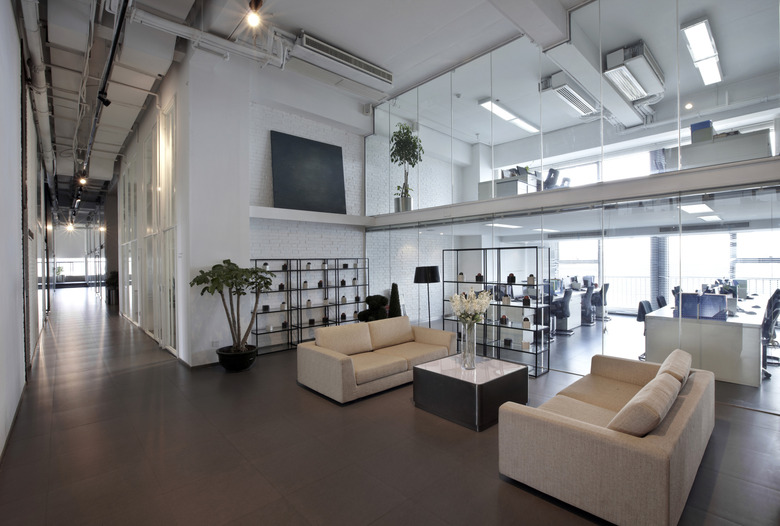When Should You Put A Sofa Against The Wall In A Room Vs. In The Middle?
While you don't want your sofa to become the elephant in the middle of the living room, there are good reasons to place it somewhere other than up against the wall. When the room is large, open plan, asymmetrical or has a fireplace focal point, the sofa can "float." Tight quarters inevitably mean the sofa occupies one wall. But try to liberate it if your configuration or square footage allows you to play with room design.
Get Your Sofa's Back
Get Your Sofa's Back
The sofa defines your living room grid, anchoring the conversation area. Where you position it depends on the room — move it out from the wall to create a sense of freedom if your space is large enough. But don't do it unless you have clearance of at least 30 to 36 inches for people to walk easily.
And don't leave a sofa in the middle of the room with its back unsupported. A sofa table "finishes" the look; a couple of stools beneath the table give you an extra seating or snacking area or a game table for two. A desk behind a sofa in a studio is a home office — keep it scrupulously neat for a harmonious multipurpose room. A simple Parsons-style table is standard behind the sofa and can hold green plants, mood or task lighting, or a display of collectibles.
Situate the Sectional
Situate the Sectional
A sectional is a dominant item in living and family room decor. It can create an island in the middle of the room that allows a free flow of traffic around it on all sides. The sheer bulk of it means off-the-wall placement can look balanced when you accommodate the comfort of everyone sitting there. A central coffee table is a convenient landing place for snacks and drinks. But side tables might be necessary if the end seats are too far for easy coffee table reach.
So put the sectional on a large carpet, add another chair or a couple of poufs, allow for adequate lighting and table surfaces, and let the sectional be the focal point. An added benefit is that the middle-of-the-room location provides a better view of a wall-mounted flat screen, which could be too far from a sectional pushed up against the wall opposite the TV in a large room.
Accommodate the Focal Point
Accommodate the Focal Point
When the sofa isn't the focal point, it has to complement the main attraction. A fireplace hogs attention in any room. In a cozy room with the fireplace centered on one wall, the logical place for the sofa is against the opposite wall. A corner fireplace makes designing furniture placement a challenge, with the sofa position at the heart of the dilemma.
In some spaces, placing the sofa parallel to the fireplace works brilliantly. This is easier in a large room with an open plan — behind a conversation grouping centered around a sofa facing the fireplace, you can add a dining table and chairs to balance the room.
Smaller rooms or awkward configurations might work best when the sofa is angled away from the walls but situated diagonally in relation to the corner fireplace. That opens up a corridor in front of the sofa that becomes the conversation area where the sofa shares the spotlight with the hearth.
Wide Open Plan
Wide Open Plan
A cavernous industrial loft or any open plan room is an invitation to move the sofa away from the wall. Put two club chairs in front of a window wall and a backless sofa opposite them — the room has form but nothing blocks the broad view. Or put two sofas back-to-back and let one work for the conversation area and the other provide seating for a dining room table or a viewing station for a media wall.
A contemporary armless sofa floats free as a cloud when it is pulled away from the wall. Wall-hugging sofas can make a room seem rigidly organized or stuck in time. When you do have the space, play with the sofa to invent a new look and chi flow, or energy pattern, in a room.
